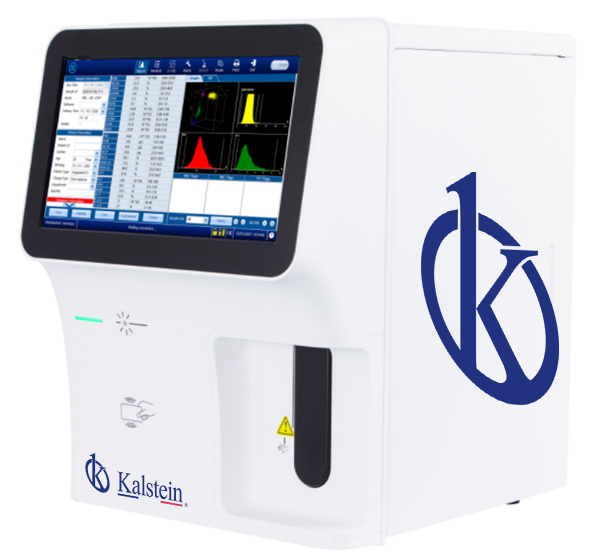Thrombocytosis is defined as a platelet count increased by more than two standard deviations above the average (> 450,000 / mm3) and is observed in 2.3% of the population, preferably in people> 40 years.
Causes of thrombocytosis
The differential diagnosis of thrombocytosis is broad. Rarely structures in peripheral blood that are not platelets can be mistakenly counted as “platelets” in automatic FBC counters, leading to false thrombocytosis.
The two main classes of genuine thrombocytosis are of secondary or reactive cause and primary or clonal causes (hematologic malignancies). In a study of 732 people with increased platelet count, thrombocytosis in 80-90% of patients was reactive to an underlying inflammatory cause.
What is reactive thrombocytosis?
Reactive thrombocytocises are caused by thrombopoietic growth factors released in response to acute bleeding, iron deficiency, hemolysis, malignant tumors, infections and acute or chronic inflammatory conditions, especially rheumatic diseases or tissue damage.
These factors, including thrombopoietin, regulate the differentiation and proliferation of the platelet precursor cell, the megakaryocyte.
A large prospective study highlights the diagnostic importance of the incidental finding of thrombocytosis. The 12-month incidence of all types of cancer was higher in patients with thrombocytosis (11.6% in men, 6.2% in women) than in those without thrombocytosis (4.1% in men, 2.2% in women).
Paraneoplastic thrombocytosis is a sign of poor prognosis in many solid tumors.
What is clonal thrombocytosis?
Clonal thrombocytosis arises from the expansion of a stem cell or mutated myeloid progenitor cells that give rise to megakaryocytes. This is more characteristic of essential thrombocytopenia, but it is also observed in other myeloproliferative neoplasms such as polycythemia vera, primary myelofibrosis and myeloid leukemia and in some myelodysplastic syndromes.
Myeloproliferative neoplasms should be treated together with a hematologist. Essential thrombocythemia is associated with a relatively high risk of thrombotic complications, such as stroke (stroke) and venous thromboembolism.
How to evaluate the patient with thrombocytosis?
A thorough history and physical examination should identify the most frequent reactive causes of thrombocytosis: infection, chronic disease, cancer, anemia, previous splenectomy or recent surgery.
Most patients with clonal thrombocytosis are asymptomatic, but some experience vasomotor symptoms (headache, visual changes, atypical precordial pain or pain in the distal part of the limbs), hemorrhagic complications (due to acquired von Willebrand factor disease), and thrombotic complications
Constitutional symptoms such as tiredness and pruritus are common in myeloproliferative disorders and can greatly worsen the quality of life. Hepatosplenomegaly suggests a primary hematological disorder. Patients with platelet counts> 1,000,000 / mm3 due to reactive thrombocytosis are usually asymptomatic
Initial studies
- Extended peripheral blood: It is a study to confirm genuine thrombocytosis and rule out false causes. It can also help differentiate between causes such as acute infection (neutrophilia or “left deviation”), iron deficiency (hypochromia or microcytosis), hypo-splenism (Howell-Jolly bodies) or myelofibrosis (tear-shaped poikilocytes) and a leukoeritroblastic blood film).
Abnormal platelet morphology may be useful, for example, in essential thrombocythemia large platelets can be observed. Polycythemia or accompanying leukocytosis (especially basophilia or eosinophilia) may also suggest a clonal disorder.
- Acute phase reactants: The increase in inflammatory markers, such as c-reactive protein or erythrosedimentation, supports the diagnosis of reactive thrombocytosis, although normal values do not rule out inflammation or a malignant tumor. Increased values do not exclude the possibility of a clonal cause.
- Iron status: Iron deficiency anemia, which is a microcytic anemia, is found in about 2% to 5% of adults. It is a potentially treatable cause of reactive thrombocytosis.
A new platelet count may also be indicated according to clinical criteria to check the resolution or persistence of thrombocytosis. If a reactive cause is suspected at the first consultation, the recount should confirm that thrombocytosis resolved after treatment. There is no standard definition for “persistent thrombocytosis,” but for practical purposes it could be thrombocytosis that lasts more than three months from the initial evaluation.
In Kalstein we have Hematology Analyzers of the highest technology and reliability, which will allow you to obtain platelet counts with great precision. That’s why we invite you to take a look at HERE

